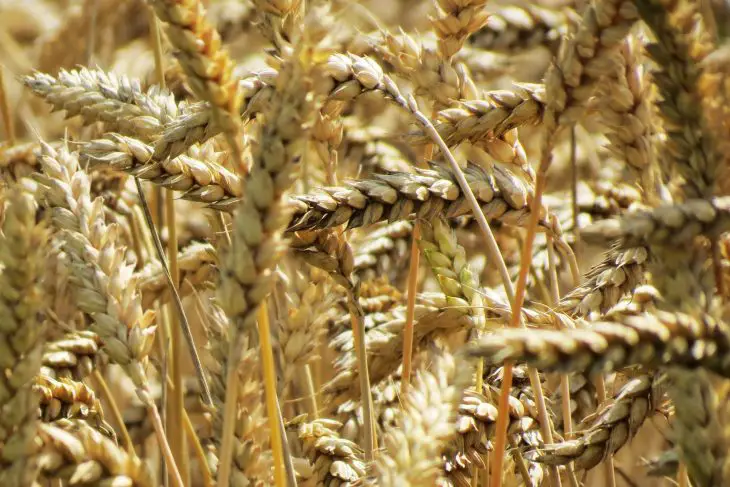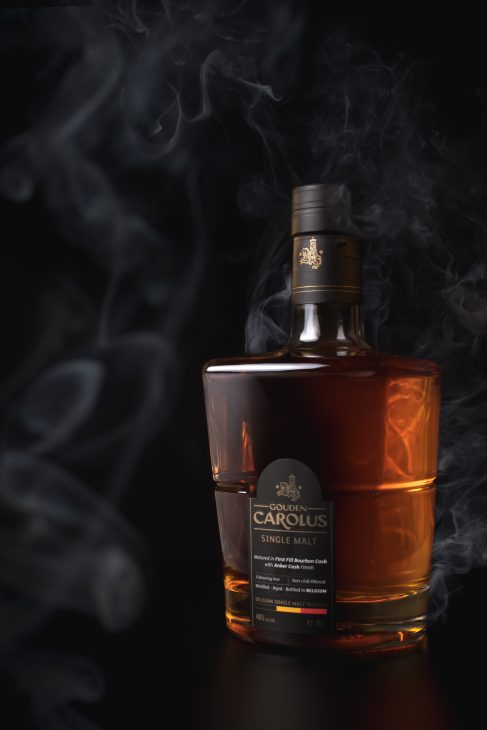Hey there! This site is reader-supported and we earn commissions if you purchase products from retailers after clicking on a link from our site.
Whiskey is made from a variety of ingredients that all play an important part in how the drink turns out. Some of these ingredients are fermented grains that help with the flavor of the whiskey as well as its color and strength of it. Barley is the most popular ingredient and is used to add a sweeter flavor to the drink similar to that of toffee, caramel, or brown sugar. Barley is heavily used for Scotch, Irish Whiskey, and Japanese whiskey and can come in both malted and unmalted forms. So let’s find out the difference between malted vs unmalted barley.
Table of Contents
- What Is Barley?
- Grain Whiskey
- Malt Whiskey
- Single Malt Whiskey
- The Malting Process
- Is One Better Than The Other?
- FAQs On Malted and Unmalted Barley

What Is Barley?
Barley is one of the most common grains to be cultivated and farmed. It is part of the grass family and is a cereal grain that is grown globally. It is used as a key ingredient in beer, whiskey, and the distilling process as a whole. Many distilled beverages are made with barley as a key ingredient.
Scottish and Irish whiskeys are made with barley primarily whereas whiskey from Canada or the United States will use corn or rye as their main ingredient.
Types Of Barley
Barley comes in two types which are malted and unmalted. Both are used frequently in the making of alcoholic drinks and are seen as essential ingredients in a lot of recipes. However, the two are not entirely interchangeable as there are some uses that one can be used for where the other will not work.
Malted Barley
Malted barley, commonly shortened to just “malt”, is barley that has undergone the process of germinating by being soaked in water. The germinating process is key for allowing the grain to start converting starch into fermentable sugars. The whole process is used to make sure that the starch in the grain can be turned into alcohol. The process is called malting and is an incredibly important step in the process of making beer and whiskey.
Unmalted Barley
Unmalted grains are used in a lot of different recipes and while barley may be the most popular grain, it comes in many different varieties and types. Similar to the number of different grapes there are for wine production, there are many types of other grains similar to barley that can be used.
There are approximately 5,500 different strains of barley, although only a small number of these are used to make whiskey. Only ten of these strains are approved by the Institute of Brewing and Distilling in Scotland for the production of Scotch whiskey.
Grain Whiskey
Grain whiskey is a category used to describe all the whiskey that is made from grains, such as barley and unmalted wheat. The other common grains used are rye and corn and sometimes a whiskey can be made with a combination of different malted and unmalted grains. There are usually two or three different grains used to make whiskey.
Malted barley or malted wheat are used in this as any malted grain will provide the enzymes needed for mashing. This is the process of mixing grains with water and heat in order to break down the starch into sugar.
When compared with malt whiskey, grain whiskey has a much lighter flavor and aroma, and is typically seen as a much milder drink. There are many hints that can be detected in grain whiskeys such as vanilla, citrus, honey, and oak. While these are the most common, the flavors are heavily dependent on what grains are used.
Malt Whiskey
Malt whiskey is similar to grain whiskey but the main difference is that exclusively malted grains are used. No unmalted grains are used in the process of making malt whiskey. Malt whiskey is typically made from mashing malted barley exclusively. There are regulations in place, mostly in Ireland and Scotland, that specify that malt whiskey has to be produced with 100% malt barley for it to be recognized as a malt whiskey in any retail store they intend to sell in.
Contrasting grain whiskey, malt whiskey is very strong and bold and will have a darker amber color. The flavor will give hints of smoke, vanilla, fruit, wood, yeast, and malt.

Single Malt Whiskey
While malt whiskey can use multiple different malted grains, single malt whiskey has a couple of extra specifications to it. Firstly, only a singular type of malted grain can be used in this. In Scotland the term is used to refer to a whiskey that has been made from only malted barley, however, globally the term can mean other things such as the USA using it to describe a whiskey that has been made using only rye or only corn.
The other specification is that the whiskey has to be made in a single distillery and then be matured for three years in a cask made from oak. The oak barrel maturing imparts a unique flavor to the whiskey and is typically used for the most premium of drinks.
For Irish distillers, single malt means that they only use one type of grain, but they have the choice to decide which grain they use. Other than this, the specifications to call your drink a ‘single malt’ are the same.

The Malting Process
To put it simply, the malting process is used to manipulate the grain into acting how a distiller wants it to act. The first step of malting is to soak or steep the barley which stops it from being dormant. Naturally, barley would remain dormant and prohibit itself from growing until the next growing season, which is spring. Malting makes the barley think it is spring so that it starts growing and sprouting.
Soaking and heating
More specifically, the grains are placed in a steeping tank and soaked for a few days. They are also heated to 60 degrees Fahrenheit so that the grains have a higher moisture content. This starts the growth process.
Draining and activating
After the grains have been immersed in water, they are taken out of the tank and drained. They then are rested outside of the water which is called wet stands. This allows oxygen to enter the grain and activate the embryo inside. When the grain is placed back in the water again, it can take on even more water this time thanks to the oxygen it has. This process can be repeated up to three times and the timing is dependent on the grain as not all of them can be soaked for as long.
Drying
After being steeped, the barley is evenly spread across a concrete malting floor that is heated to the same temperature that the water was. Regularly, the grains are turned over so that they avoid excessive heat building up. This happens typically twice a day. This drying process encourages the grains to germinate, which lets them convert starch into sugar, making the creation of alcohol a lot easier.
Kilning
After they have been properly dried, the grains are placed inside of a maltsters kiln for a process known as kilning. Over the period of 24-48 hours, this kiln is heated to a temperature of 120 F which is high enough to stop the grains from sprouting too much, but is also not so high that the enzymes are destroyed. After this process, you are left with a dried grain with sugar and starch. Alongside this, the grain also has diastase in it which is a key enzyme for the next step of whiskey production.
To summarize, the malting process may be long and complicated but it always follows the same steps;
- Soaking and heating
- Draining and activating
- Drying
- Kilning
Is One Better Than The Other?
There are several pros and cons that each type of grain will possess. However, if you use malted or unmalted grains is up to you. The largest positive of using malted grains is that the resulting whiskey will be a lot stronger and have a completely different taste.
The only caveat to using malted grains is that the entire process is very labor intensive and can take a lot of time, money, and resources for anyone trying to make their own whiskey.
FAQs On Malted and Unmalted Barley
Malted whiskey has a much stronger flavor and will be darker in color. The flavor and aroma of a malt whiskey are a lot stronger and deeper than that of an unmalted whiskey. Grain whiskey, also known as unmalted, is a lot lighter in color and has a more fragrant flavor.
Unmalted barley is normal barley that has not undergone the malting process. This process essentially is used to activate an enzyme in the barley that converts starch into sugar.
Malted barley is used for beer brewing as the malting process allows the barley to convert starch into sugar. This is a key step for making beer sweet and tasty as, without it, you will have something that tastes a lot bitterer.
Malted barley and barley are almost the same, except malted barley has undergone a process that allows it to convert starch into sugars. The result of this process will create a very different drink from what unmalted barley would create.
Recommended Reading
How Is Scotch Made? Step-by-Step Guide
This is a special type of whiskey that has special regulations it must adhere to for it to be labeled as authentic and genuine Scotch whisky. Let's deep dive and learn how is scotch made.
Will Whiskey Freeze And Can You Keep Whisky In The Freezer?
Whiskey is a delicious and popular drink best served with ice. However, you may be wondering, will whiskey freeze?
How to Make Whiskey at Home in 7 Steps
Whiskey is a delicious beverage that has been enjoyed for thousands of years. However, you may be wondering how to make whiskey at home.
7 Best Jack Daniel’s Flavors: Updated
If you are familiar with brands of alcohol, then you should have at least heard of Jack Daniels. Learn more about best Jack Daniel's flavors.
The Best Bourbon Under $50
Prepare your palate for a flavorful journey, because this list of the best bourbon under $50 has some new and old favorites for you to discover.
Is Whiskey Better Than Beer? Which Is Healthier?
Thinking about getting into whiskey? Wondering whether to stick to the tried and tested homebrewed beer? Here's some food (or drink) for thought...
